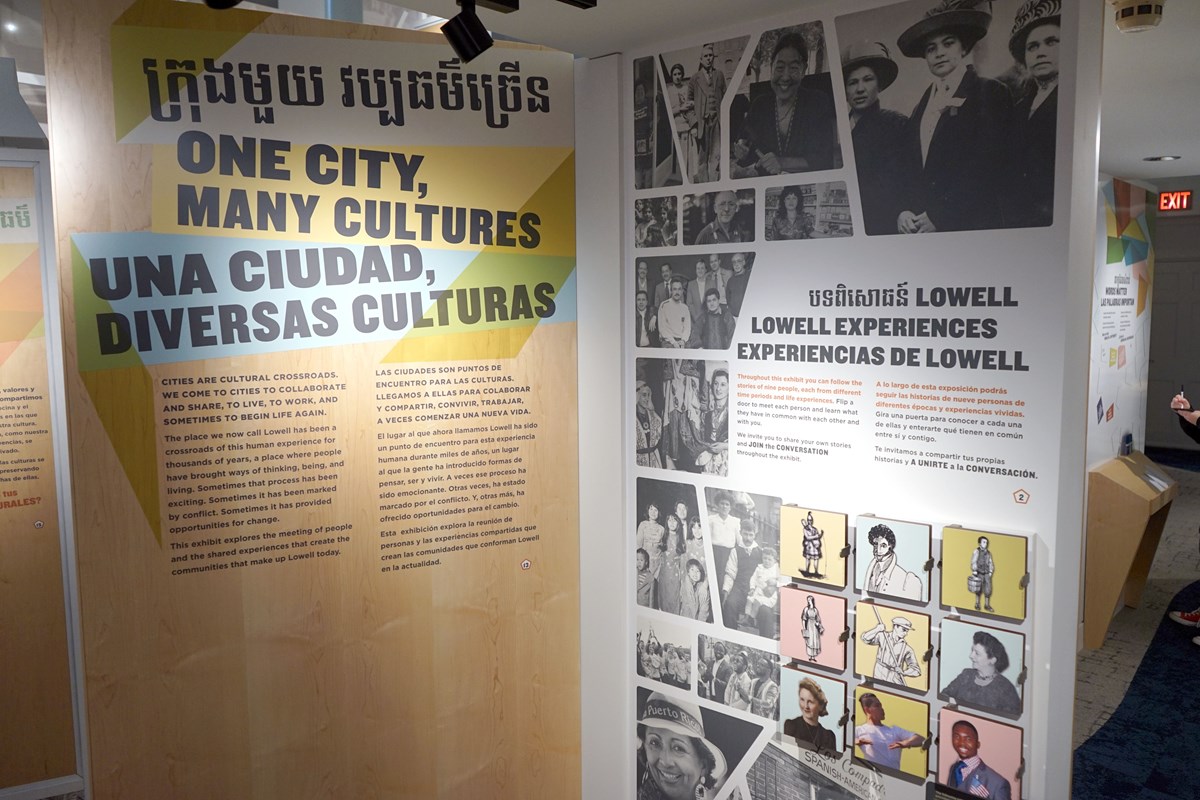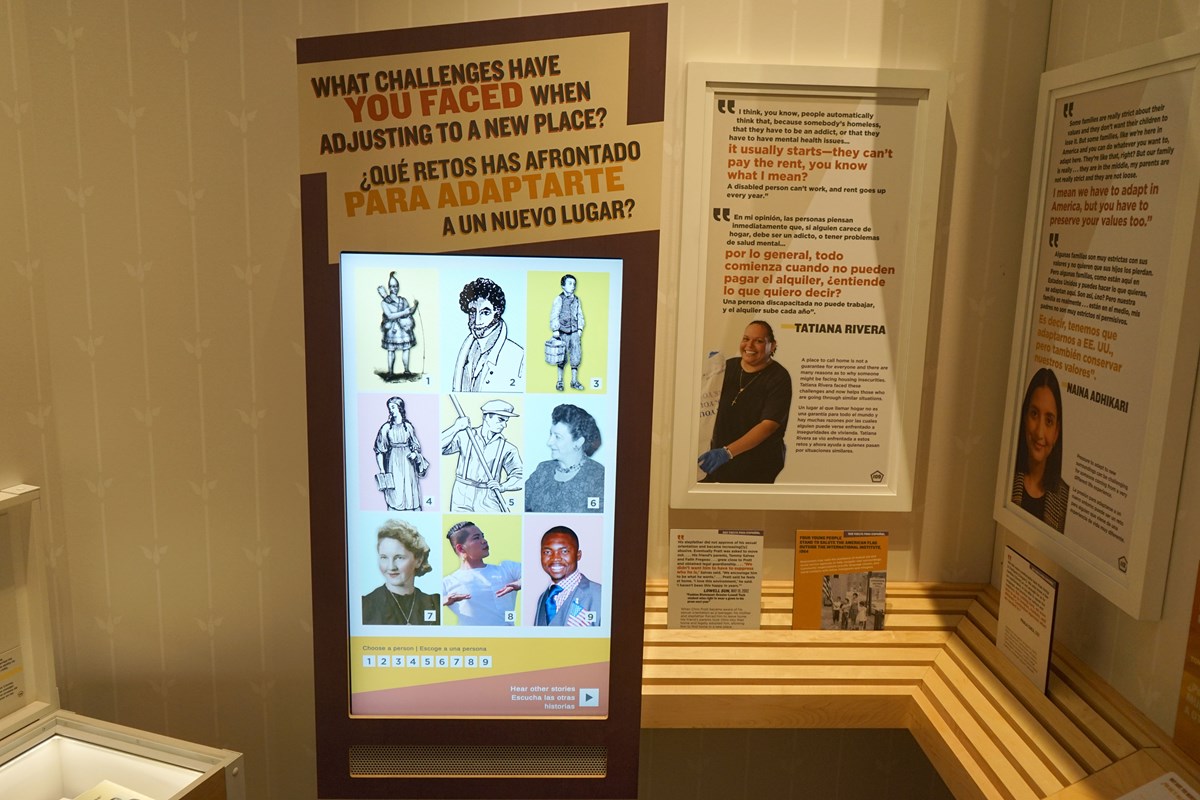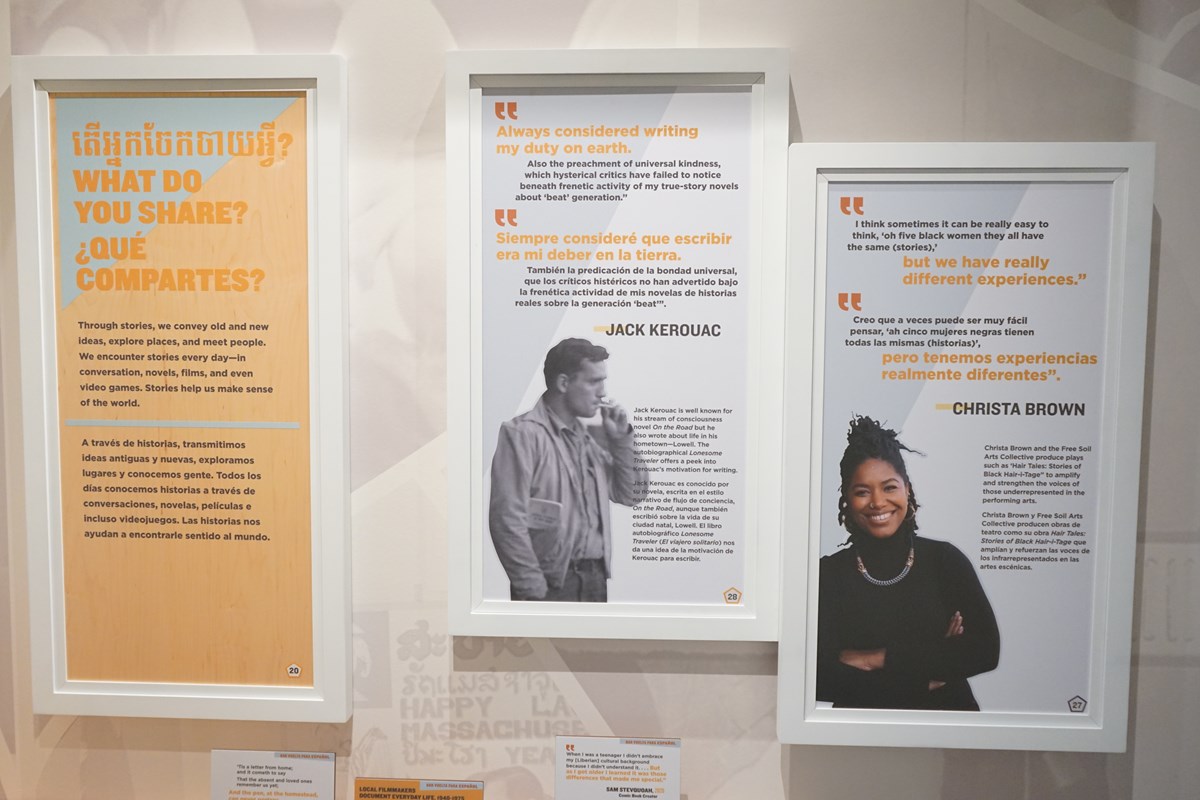UML and Others Collaborate With National Park on Exhibit

10/02/2023
By Marlon Pitter
Celebrating the history and diversity of Lowell, the Lowell National Historical Park recently launched the “One City, Many Cultures” exhibit at the Mogan Cultural Center in downtown Lowell.
The interactive exhibit tells the stories of different immigrant communities, detailing the challenges they faced upon arrival, how they preserved their traditions and how they thrive today. It features photos of different immigrant communities, videos with responses to questions about their experiences, cultural mementos donated for the exhibit and a timeline documenting the history of immigration to Lowell.
“When people came here 200 years ago looking for ways to make a living and a place to call home, there was an opportunity for them to do that here,” says Lowell National Historical Park Superintendent Julie Galonska.
Lowell’s tradition of welcoming new waves of immigrants and providing them opportunities continues, she says.

The exhibit includes booths where visitors can share their cultural experiences in Lowell, which Distinguished University Prof. Robert Forrant says enriches the exhibit and adds to its longevity.
“As we learn more about older history and … newer experiences, we'll be able to record all of it and put it in the space,” he says.
College of Fine Arts, Humanities & Social Sciences Assoc. Dean of Undergraduate Studies Sue Kim says the exhibit looks to preserve the history of Lowell while recognizing the hardships that various communities endured.
“These communities have been marginalized and systemically disempowered, but they're also incredibly resilient and creative under the most difficult of circumstances,” she says.
Members of the UMass Lowell community contributed to the creation of “One City, Many Cultures,” which replaces a previous immigration exhibit that opened in 1988. Tsongas Industrial History Center staff were on the steering committee, while Forrant and Kim were part of community roundtable conversations that included UML alumni and Lowell residents.

“People from all walks of life in Lowell volunteered their time to talk to us about what an exhibit about the cultures of Lowell should be, what the content should be, what it should look like, what it should feel like, and helped us … to produce what you see here,” Galonska said.
Forrant, a member of the History Department faculty, says the exhibit can be particularly beneficial to UML students.
“If they're going to be living in Lowell four years or longer, then they ought to know what the place is all about,” he says.
Forrant says his involvement with such community-based projects allows him to incorporate a “Lowell perspective” in the classes he teaches.
The exhibit is open daily from 11 a.m. to 4:30 p.m.
